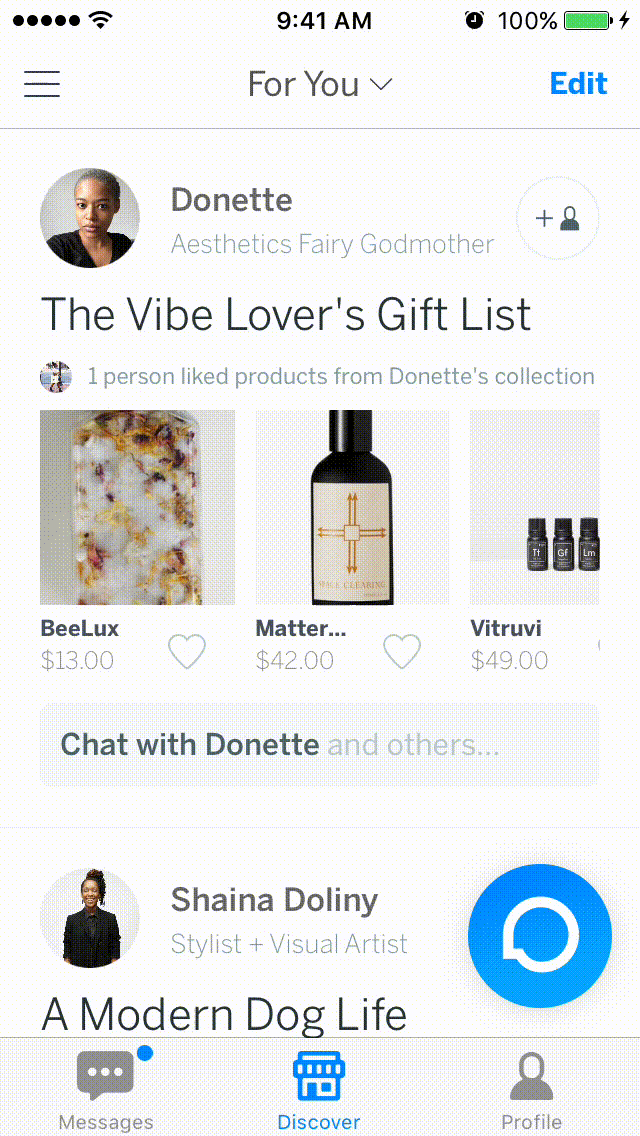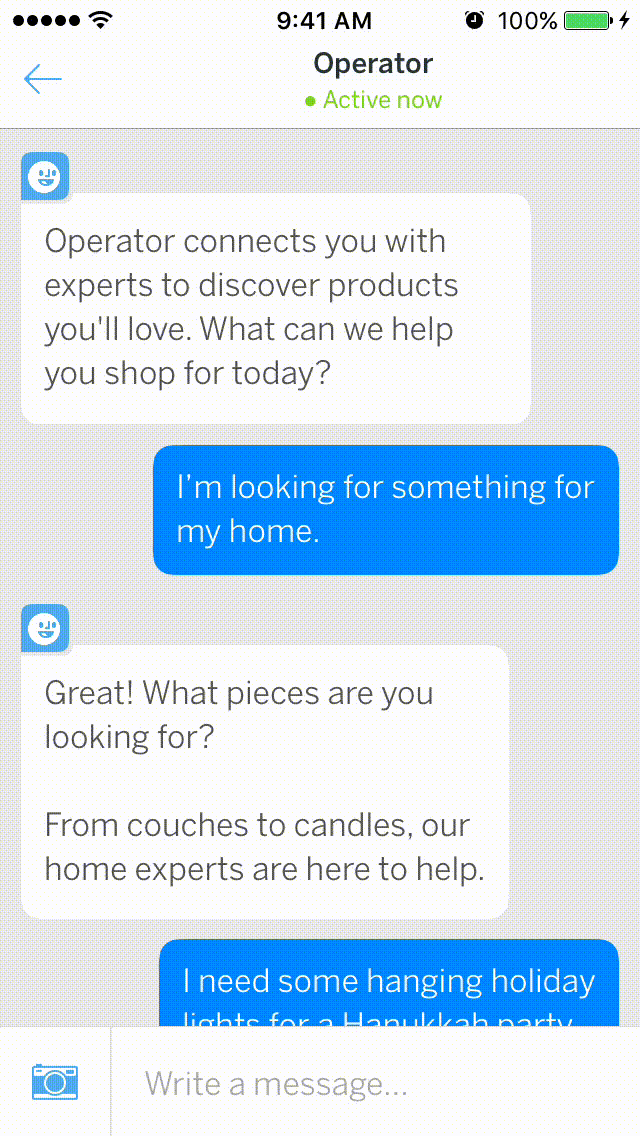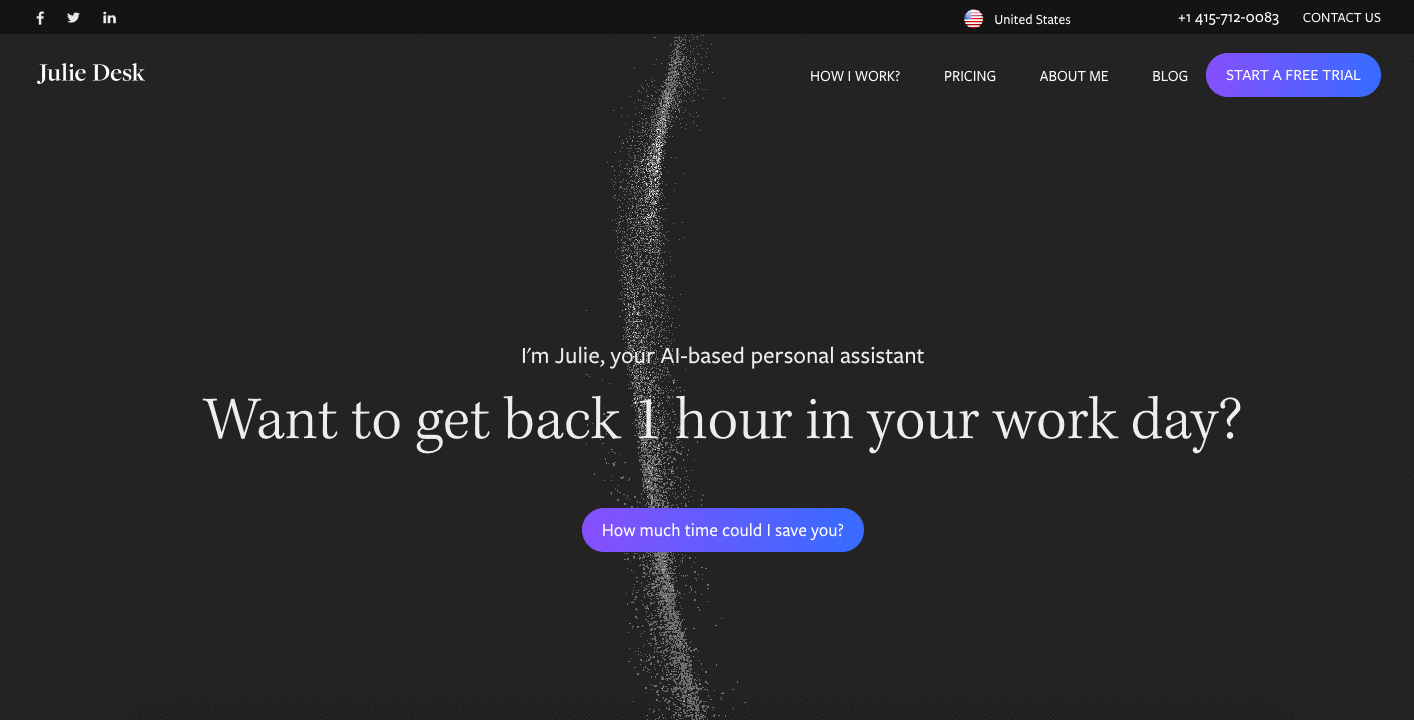
With the recent release of Google Home in the U.S., voice-activated devices are a big topic du jour lately. But which personal assistant tools are the most helpful? What do you need for each one? And how much do they cost?
While a simple search for “personal assistant apps” seems to yield countless results, shifting through them can be a task.
Today, consider us your digital personal assistant. We narrowed the options down to our very own top five. Read on, and discover which ones will best fit your needs.
5 Personal Assistant Tools That Actually Make Life Easier
1) Operator
- Price: Free
- Requirements: iOS
Vacations are great. Holiday parties are, too. But scheduling the former immediately after the latter? Well, it’s a prescription for stress. There are people to feed, wines to buy, and bags to pack.
But wait. There’s an app for that. With a packed work schedule, who has the time to deal with the aforementioned items, let alone to find special decorative lights? The experts at Operator -- that’s who.
Once you download Operator, you’ll see a blue dialogue bubble in the lower right corner of your screen. Tap that, then choose where you need help.

From there, you’ll be asked a series of questions about what exactly you need. Here’s a chat that I had with a real person -- Holly -- when I needed help finding some decorative lights for that party.

Holly later went on to ask me about my price range, shipping preferences, and sent me several lighting options. And look, she even laughed at my joke.
2) Charlie
- Price: Free
- Requirements: Google Calendar, iOS
Knowing your audience is something on which we place great importance. That’s why we do things like create buyer personas and perform other user research.
That’s important in marketing -- and in meetings. After all, if an important contact with whom you’re not completely familiar agrees to meet with you, it’s best to avoid walking in without any knowledge of what the person does. That’s where Charlie comes in.
Charlie connects to your calendar to see who you have meetings with over the next week. Then, it identifies the person and asks if you’d like some background information on them.
It’s not as creepy as it sounds, though. The only information it finds is what’s publicly available online, like on LinkedIn and Twitter. For example, here’s what it would look like if someone had a meeting with me:

Notice that there’s a section on “ways to start the conversation.” That contains news pieces about the person that can help you open a dialogue with the person. Plus, in case you’ve been in touch with this contact before, Charlie allows you to review any previous communication you’ve had with him or her.
3) Google Home
- Price: Allo (free), Google Home ($129)
- Requirements: Android 4.1 and higher, iOS 8 and higher (only available in English and for purchase in the U.S.)
When I asked my team for personal assistant app recommendations, HubSpot’s Web Team Tech Lead, Dmitry Shamis, immediately pointed to Google Home.
What does he love about it? Well, it does the same thing that a lot of similar devices on the market do -- things like responding to hands-free voice prompts, for example -- but it also incorporates many elements of Google that many we use day-to-day, including search.
“The real benefit is how it integrates into my Google life,” Shamis told me. “My trips, my calendar, my shopping list.”
Google Home is less of an app, however, and more of a device. It’s powered by Google Assistant -- the technology used to answer questions in the search engine’s Allo app, which is configured to respond to search queries, set reminders, and engage in everyday chit chat. Have a look:

Imagine if I could have that entire conversation without all the typing. Sure, the Assistant technology alone is great, but the whole hands-free help thing offered by Google Home? That's just awesome. I mean, just look at its list of features.
4) Amazon Echo
- Price: $179
- Requirements: Wi-Fi. Compatible with Fire OS, Android, and iOS devices and accessible via web browser.
Before there was Google Home, there was Amazon Echo -- which Shamis tells me is what he used first. The Echo is powered by Alexa, Amazon’s voice recognition technology, which is used less for search engine capabilities, and more for instant information like sports scores, weather, and news.
Despite his happiness with Google Home, there are still some things about the Amazon Echo that Shamis misses. He’s particularly nostalgic, he told me, for the ability to quickly buy things with the Echo. For example, he told me, “Things like, ‘Alexa, buy more dog food’ were extremely helpful.”
And another key differentiator for him? Echo’s Spotify integration. "‘Alexa, play Spotify’ would pick up where I left off on my phone,” he explained. “‘Hey Google, play Spotify’ will play something completely random.”
But when I asked Shamis if he’d advise someone to get both, his answer was a resounding “no.”
“It’s one or the other,” he said, since “there’s enough overlap that you don’t need both. I think it becomes a personal preference.”
That’s not to say it’s impossible to use both, especially for one’s personal entertainment -- like in this video of the two devices speaking to each other.
5) Julie Desk
- Price: Pro ($99.99 month/per user), Manager ($149.99 month/per user), Executive ($199.99 month/per user)
- Requirements: Any email client
Visit the official website for Julie Desk, and you’ll be faced with a question: “Want to get back 1 hour in your work day?”
Um, yes. That’s what Julie Desk was created to do -- to save us the countless time we spent on managing our respective calendars. And admittedly, for me, that’s a lot.
But starting with that question, Julie Desk’s website is a compelling example of great user experience -- which hints at its capacity to work on behalf of, well, you, the user. Have a look:

There are are few things about Julie Desk that delight us. To start, there are no downloads required, since Julie -- as she’s casually called -- works with your existing email client.
When you first sign up for the service, you’ll be asked for your meeting preferences, like time of day, location, and mode of transportation.
It takes about 24 hours for Julie to get you completely enrolled in the service, probably because there’s a human element -- the service is constantly monitored by actual people to make sure nothing goes awry. But once you’re set up, that’s when the fun begins. Every time you receive an email requesting a meeting, just copy Julie on your reply -- she’ll take it from there.
Here’s more on how it works:
Appy, Healthy, More Productive
From online human interaction, to digital voice recognition, to a virtual meeting scheduler, these apps might not cover everything, but they certainly make life easier.
Sure, it would be nice if there was a tool out there to, say, virtually clean the entire house. Until that becomes available, we’re not entirely far off. And some of these resources could at least provide information on home-cleaning-made-easy hacks -- but only if you ask.
Remember when any of these tools seemed like “a thing of the future”? They’re here -- and we can’t wait to see what’s next.
What are your favorite personal assistant apps? Let us know in the comments.

from HubSpot Marketing Blog https://blog.hubspot.com/marketing/personal-assistant-tools-to-make-life-easier

No comments:
Post a Comment